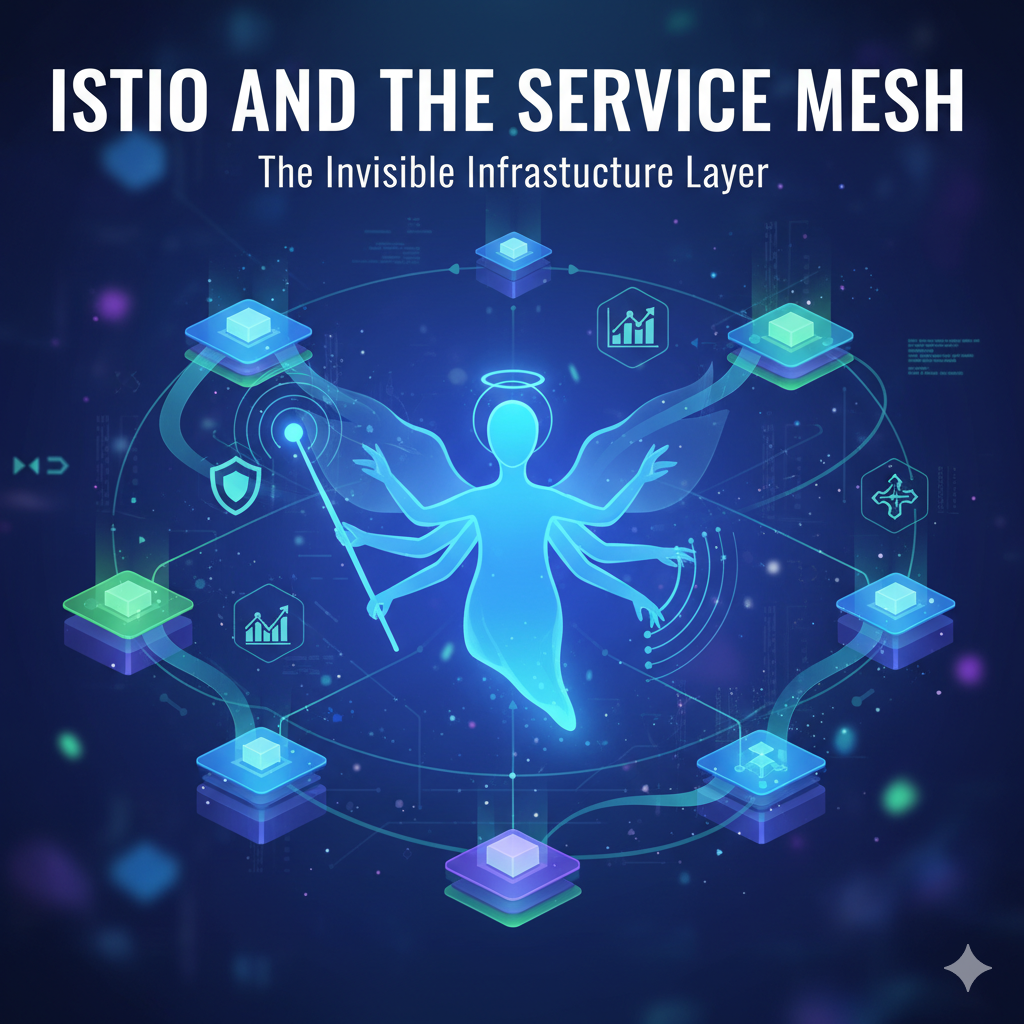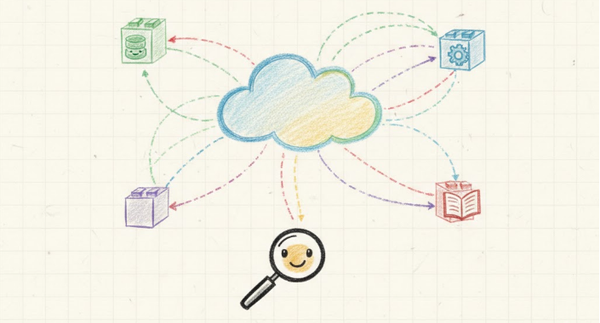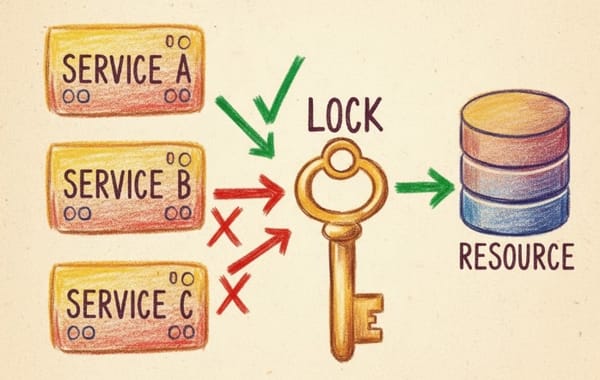Service Mesh Explained: Why Istio is Essential for Microservices

If you've migrated to microservices, you know the feeling: your application is faster, more flexible, but the simple act of service "A" talking to service "B" has become a network nightmare. Enter the Service Mesh—the critical piece of infrastructure that solves this complexity.
🧐 What is a Service Mesh?
A Service Mesh is a dedicated infrastructure layer that handles all service-to-service (or "east-west") communication within a distributed application. Think of it as a sophisticated, built-in network utility for your services.
Instead of services having to implement their own logic for networking, security, and observability, the mesh abstracts this complexity away into a separate layer.
The mesh consists of two key parts:
- Data Plane (The Messengers ✉️): This is made up of lightweight network proxies, typically deployed as sidecar proxies that run alongside each microservice container. Every bit of traffic entering or leaving your service goes through its sidecar. These proxies are the workhorses that enforce policies and gather data.
- Control Plane (The Brain 🧠): This is the centralized management system that configures and governs all the proxies in the data plane. It translates high-level configuration rules (e.g., "send 10% of traffic to the new version") into specific instructions for every proxy.

Core Benefits a Service Mesh
A Service Mesh isn't just about managing traffic; it's about fundamentally improving the operation of your distributed application across several critical dimensions:
- Traffic Management: A service mesh allows you to perform advanced deployment strategies like Canary Deployments (gradually rolling out new versions) and A/B testing, along with fine-grained routing and fault injection, all without touching your application's code.
- Security: It automatically provides Mutual TLS (mTLS) for encrypted and authenticated service-to-service communication, simplifying your zero-trust security model. It also enables robust authorization policies to control who can talk to whom.
- Observability: The mesh delivers crucial metrics, logs, and distributed tracing data for free. This gives you unparalleled insight into service performance, dependencies, and helps quickly pinpoint issues within your complex microservices landscape.
- Resilience: It actively improves your application's fault tolerance by implementing automatic circuit breaking, retries, and timeouts. These features prevent cascading failures and keep your system stable even when individual services encounter problems.
🌟 The Role of Istio: The Conductor
Istio is the most widely adopted open-source Service Mesh platform, and it is what transforms the conceptual idea of a service mesh into a concrete, powerful reality.
In simple terms, Istio IS the Control Plane that manages and configures the Envoy proxies that make up the data plane.
Istio’s Key Responsibilities in the Mesh
Istio provides the API and the components needed to enforce the three pillars of a modern distributed application:
1. Connect (Traffic Management) 🛣️
Istio gives you unprecedented control over the flow of traffic. Using its custom configuration resources (like VirtualService and DestinationRule), you can:
- Split Traffic: Effortlessly route a specific percentage of user requests to a new service version for a safe rollout.
- Fault Injection: Test the resilience of your application by deliberately introducing delays or errors.
- Advanced Load Balancing: Configure sophisticated load balancing rules beyond what standard Kubernetes provides.
2. Secure (Zero Trust) 🛡️
Istio’s security components handle identity management for all services. It ensures that services can trust each other and communicate confidentially:
- Automated mTLS: Automatically encrypts all traffic between services without requiring any changes to the service's code.
- Authorization: Enforces fine-grained, identity-aware access control policies, allowing you to define exactly which service can communicate with another.
3. Observe (Telemetry) 📊
Because every request passes through an Istio-managed proxy, it collects rich telemetry data automatically. This is invaluable for operations teams:
- Distributed Tracing: Tracks a single request across multiple services, making it easy to pinpoint performance bottlenecks.
- Metrics & Logging: Collects request rates, latency, and error counts for all service interactions, feeding them into monitoring tools like Prometheus and Grafana.
In essence, Istio takes the heavy lifting of networking, security, and monitoring off the shoulders of your developers and provides a single, consistent, and powerful platform for operators to manage the entire microservices fabric. It’s the invisible, but indispensable, layer that allows your distributed system to function reliably at scale.



